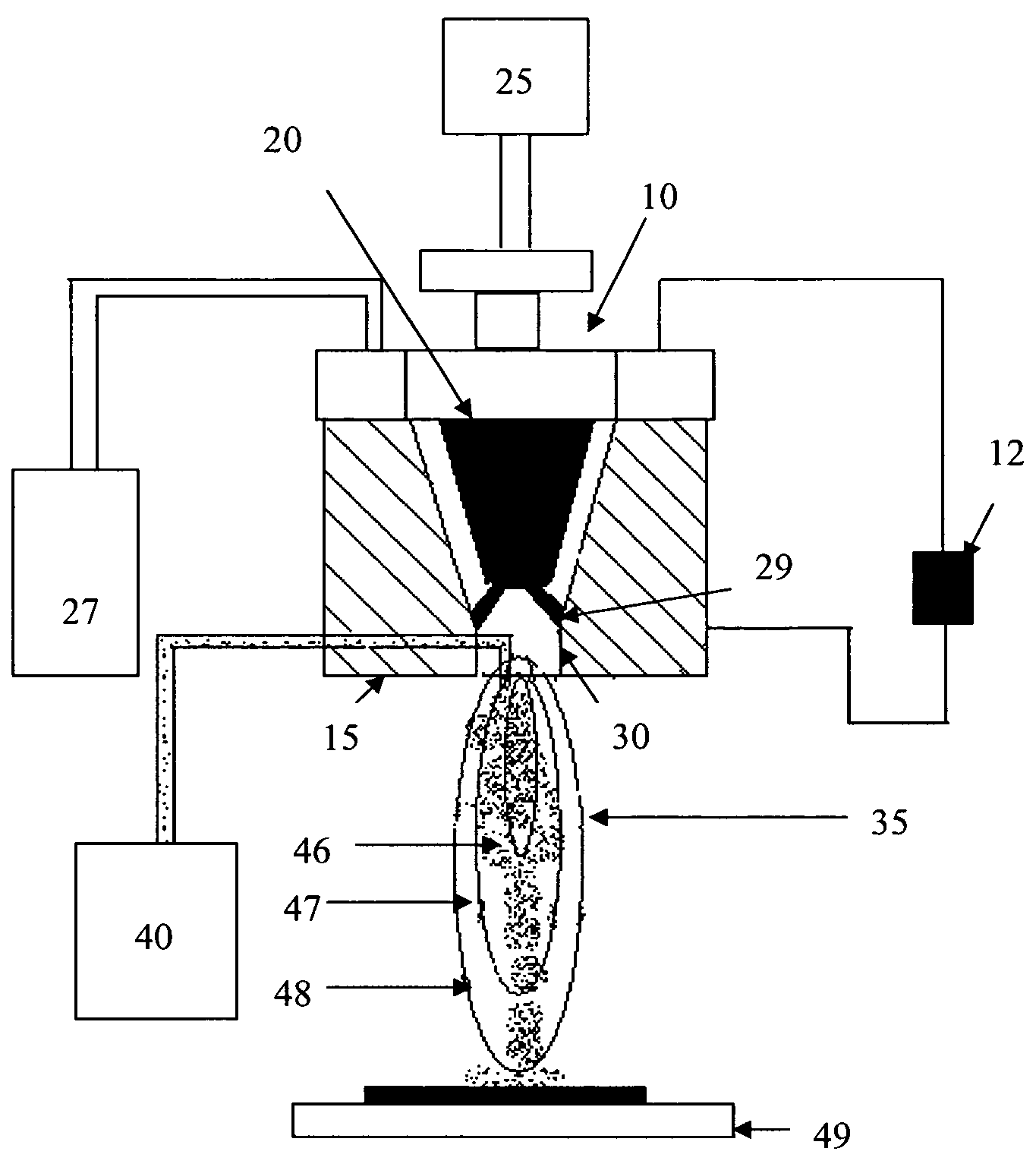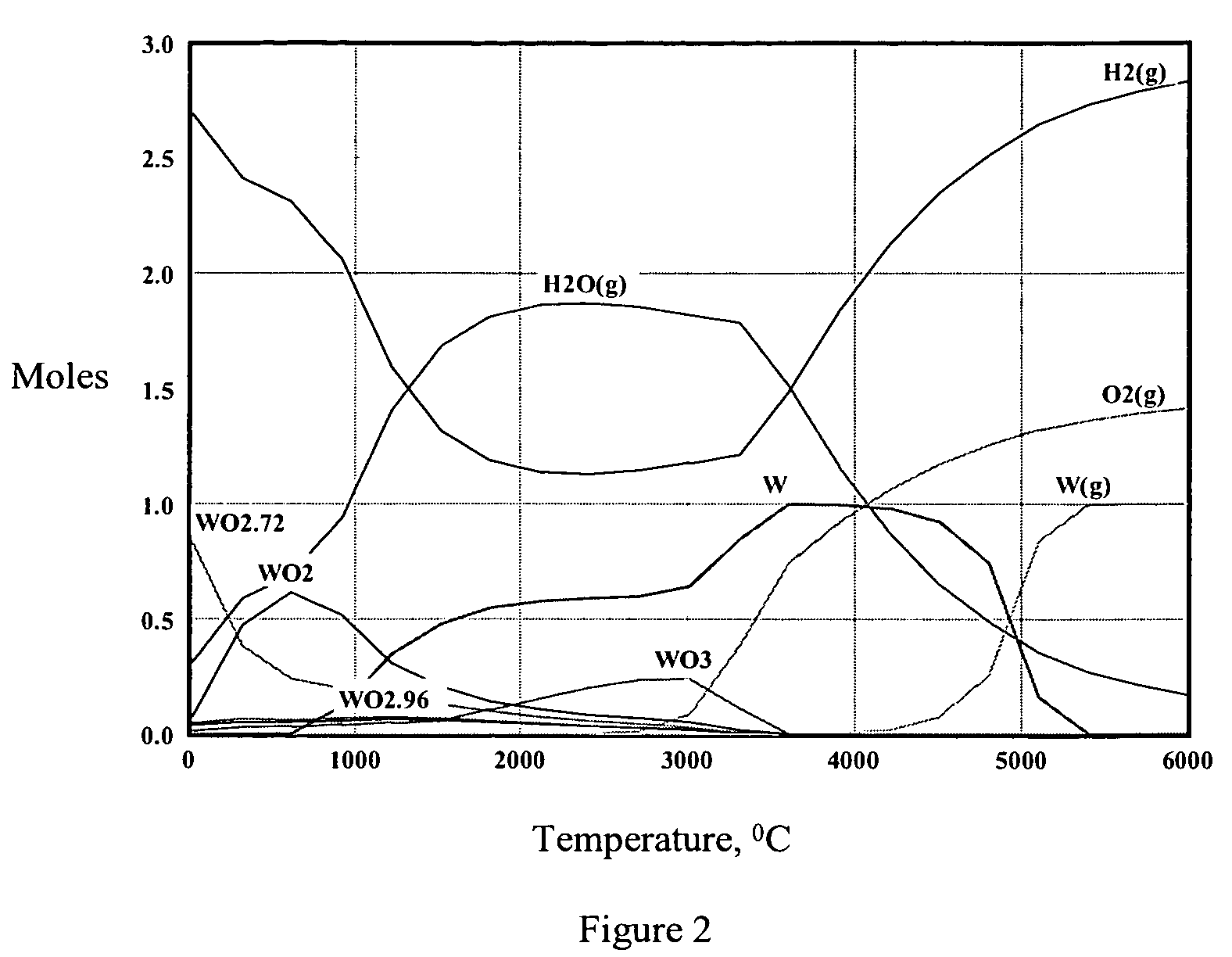Nano powders, components and coatings by plasma technique
a plasma technology for nano powders and components, applied in plasma techniques, transportation and packaging, coatings, etc., can solve the problems of conventional tungsten materials, poor ductility and decohesion of large grains, and material drawbacks
- Summary
- Abstract
- Description
- Claims
- Application Information
AI Technical Summary
Benefits of technology
Problems solved by technology
Method used
Image
Examples
Embodiment Construction
[0036]The various embodiments of the present invention and their advantages are best understood by referring to FIGS. 1 through 13 of the drawings. The elements of the drawings are not necessarily to scale, emphasis instead being placed upon clearly illustrating the principles of the invention. Throughout the drawings, like numerals are used for like and corresponding parts of the various drawings.
[0037]The drawings represent and illustrate examples of the various embodiments of the invention, and not a limitation thereof. It will be apparent to those skilled in the art that various modifications and variations can be made in the present invention without departing from the scope and spirit of the invention as described herein. For instance, features illustrated or described as part of one embodiment can be included in another embodiment to yield a still further embodiment. Moreover, variations in selection of materials and / or characteristics may be practiced to satisfy particular d...
PUM
| Property | Measurement | Unit |
|---|---|---|
| temperature | aaaaa | aaaaa |
| residence time | aaaaa | aaaaa |
| size | aaaaa | aaaaa |
Abstract
Description
Claims
Application Information
 Login to View More
Login to View More - R&D
- Intellectual Property
- Life Sciences
- Materials
- Tech Scout
- Unparalleled Data Quality
- Higher Quality Content
- 60% Fewer Hallucinations
Browse by: Latest US Patents, China's latest patents, Technical Efficacy Thesaurus, Application Domain, Technology Topic, Popular Technical Reports.
© 2025 PatSnap. All rights reserved.Legal|Privacy policy|Modern Slavery Act Transparency Statement|Sitemap|About US| Contact US: help@patsnap.com



